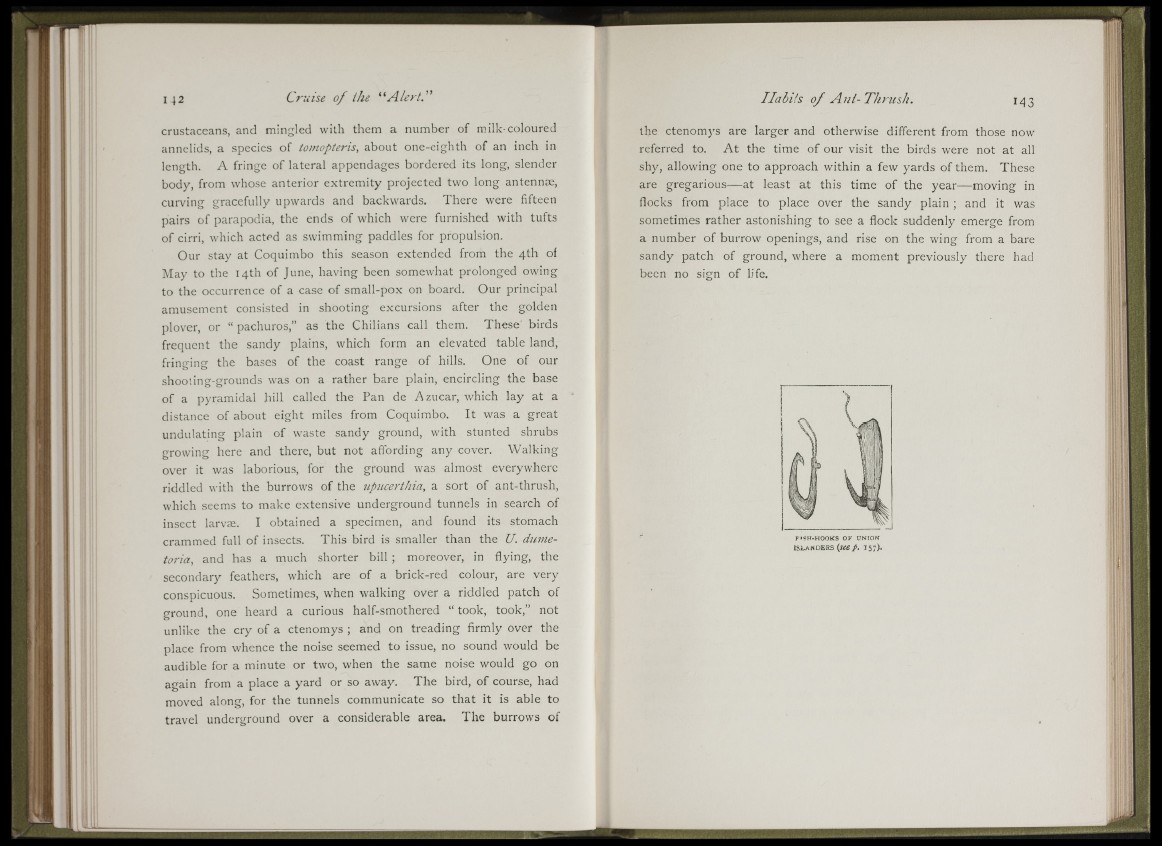
crustaceans, and mingled with them a number of milk-coloured
annelids, a species of tomopteris, about one-eighth of an inch in
length. A fringe of lateral appendages bordered its long, slender
body, from whose anterior extremity projected two long antennce,
curving gracefully upwards and backwards. There were fifteen
pairs of parapodia, the ends of which were furnished with tufts
of cirri, which acted as swimming paddles for propulsion.
Our stay at Coquimbo this season extended from the 4th of
May to the 14th of June, having been somewhat prolonged owing
to the occurrence of a case of small-pox on board. Our principal
amusement consisted in shooting excursions after the golden
plover, or “ pachuros,” as the Chilians call them. These birds
frequent the sandy plains, which form an elevated table land,
fringing the bases of the coast range of hills. One of our
shooting-grounds was on a rather bare plain, encircling the base
of a pyramidal hill called the Pan de Azúcar, rvhich lay at a
distance of about eight miles from Coquimbo. It was a great
undulating plain of waste sandy ground, with stunted shrubs
growing here and there, but not affording any cover. Walking
over it was laborious, for the ground was almost everywhere
riddled with the burrows of the npuccrthia, a sort of ant-thrush,
which seems to make extensive underground tunnels in search of
insect larvae. I obtained a specimen, and found its stomach
crammed full of insects. This bird is smaller than the U. dume-
toria, and has a much shorter bill ; moreover, in flying, the
secondary feathers, which are of a brick-red colour, are very
conspicuous. Sometimes, when walking over a riddled patch of
ground, one heard a curious half-smothered “ took, took,” not
unlike the cry of a ctenomys ; and on treading firmly over the
place from whence the noise seemed to issue, no sound would be
audible for a minute or two, when the same noise would go on
again from a place a yard or so away. The bird, of course, had
moved along, for the tunnels communicate so that it is able to
travel underground over a considerable area. The burrows of
the ctenomys are larger and otherwise different from those now
referred to. A t the time of our visit the birds were not at all
shy, allowing one to approach within a few yards of them. These
are gregarious— at least at this time of the year— moving in
flocks from place to place over the sandy plain ; and it was
sometimes rather astonishing to see a flock suddenly emerge from
a number of burrow openings, and rise on the wing from a bare
sandy patch of ground, where a moment previously there had
been no sign of life.
FISH-HOOKS OF UNION
ISLÄNDERS {seep. 15;).
i!
:4: i ii